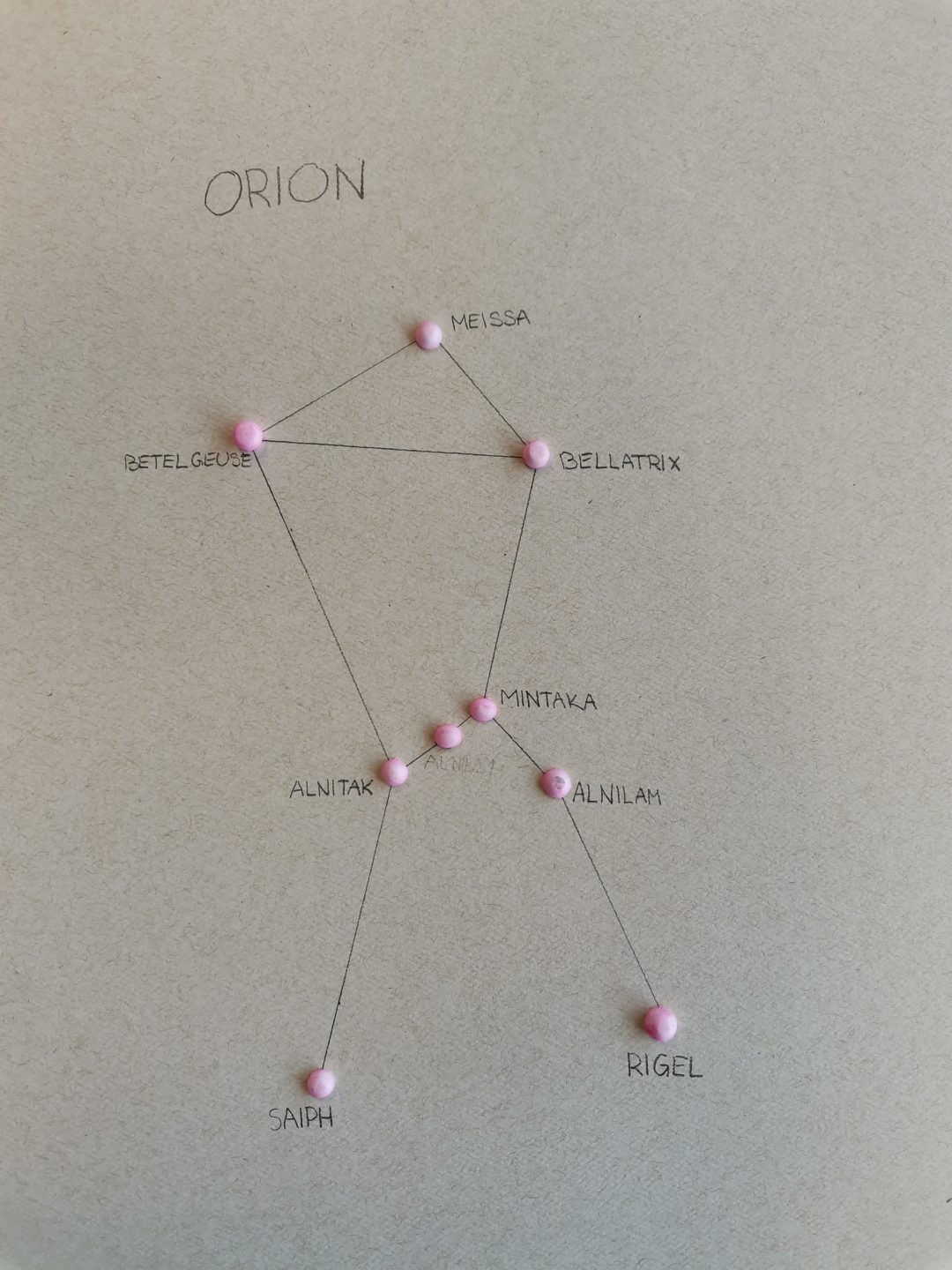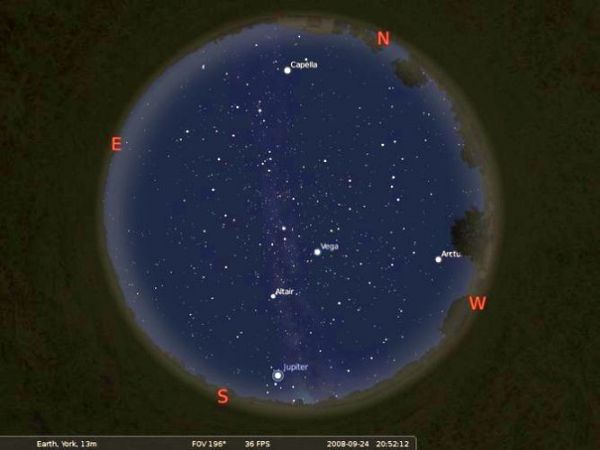

Another type of paper star map is the planisphere, a circular star map containing many constellations and bright stars seen throughout the year. There are also star charts, usually in rectangular form resembling a Mercator map of the Earth, that use the celestial coordinate system of hour circles (think longitude) and degrees of declination (think latitude). Other monthly star maps may be drawn to include the position of any visible planets or show where visible planets would be if any were in the evening skies. This type of map only shows the position of constellations and bright stars for that month and indicates different times during the month when the map and sky match. Star maps are typically set for each month and are drawn as a circle with the center of the map as the zenith, straight overhead, while the circle represents the horizon.

This could be either old-school with a printed map or planisphere (a circular star map that may be rotated and set to a specific date and time), or with a smartphone or tablet and an astronomy app. Figure 1: Observing our Moon with family members (photo courtesy of author).īasic to most “astro-endeavors” is the use of a star map.

Learning about our night and daytime skies regardless of the local circumstances is part of the environment we live within, so it makes good sense to become more aware of these surroundings (see Figure 1). Even within light-polluted populated areas, there are opportunities for viewing celestial events, albeit perhaps not as bright or as easily seen due to lights and the local horizon conditions. I would usually add, with a smile, “But not while walking!” Learning about the night sky (while standing or sitting) and “all” that it contains is a great way for parents to become engaged with their children in activities that require little or no expense other than the time spent together. “Keep Looking up!” was a phrase often said by an astronomy teacher friend of mine.


 0 kommentar(er)
0 kommentar(er)
